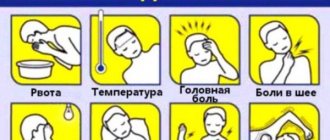Stuttering is a serious problem that impairs the quality of life. In the process of speaking, a person may experience difficulties that are expressed in the periodic repetition of individual sounds, syllables or in spasms in the muscles of the articulatory, respiratory or vocal parts of the speech apparatus. In 99% of cases, this problem appears in preschool age and requires urgent help, because... only at the very beginning of its occurrence, stuttering is only a speech problem. The longer the stuttering experience, the more symptoms it appears (these are logophobia, tricks, obsessive thoughts, etc.). Therefore, the sooner parents turn to specialists, the faster and easier it is to return the child to “speech health.”
They try to treat stuttering in different ways: this includes the help of a psychologist, speech therapy techniques, and complex medication regimens. And in fact, each of them can bring a temporary improvement in speech, but not always and not for long. To help a child (or adult) fully cope with a problem, you need a comprehensive impact on all aspects of a person’s speech and emotional state.
Classification of causes of stuttering
The exact causes of stuttering are unknown today; it is assumed that this is a combination of certain factors that, due to a complex effect, trigger complex pathological mechanisms that disrupt the functioning of speech centers. In this case, a mismatch occurs in the work of the auditory and speech centers, a delay in the feedback signal, which causes a spasm in one or more parts of the speech apparatus.
Usually all reasons are divided into
- predisposing (these include the genetic and neurological characteristics of a given person)
- provoking (stress: sometimes a slight fright or severe shock, severe somatic illness, etc.)
Often stuttering occurs “gradually”, unnoticeably. Parents are “guessing” but cannot find one noticeable provoking cause.
You need to be very attentive to the child’s speech if there is already a stutterer in the family. If this is a “blood” relative, then the factor of genetic predisposition already exists and the factor of imitation is added. But even if this is a “not blood” relative, then the imitation factor alone can also become provoking.
But the most important thing is that thanks to the technique of L.Z. Harutyunyan, it is possible to achieve fluent speech, regardless of whether the stuttering is neurosis-like (genetically determined, organic) or neurotic (functional).
Stuttering in children
It is necessary to correct stuttering with frequent sessions with a specialized specialist - a speech therapist. The work is aimed at:
- freeing the baby’s speech from excessive tension;
- elimination of incorrect pronunciation;
- formation of clear articulation, correct and expressive speech.
Speech therapy work is the basic method of therapy around which other methods of correction are built. First, classes are conducted in private with a speech therapist, who teaches the child various techniques for correct pronunciation of individual words, phrases and sounds. Then the exercises go on their own. All acquired skills are reinforced in everyday life, i.e. in communication with parents and peers.
There are several important rules for children who stutter when conducting classes:
- Planning your statement. At the very beginning of work, it is better to avoid improvisations in speech, so as not to provoke speech spasms. When a child knows what he wants to say, he becomes more relaxed and emotional tension goes away.
- Breath. Each pronunciation of a word should occur while exhaling.
- Pauses in speech. A short stop allows you to gain some air while the stutterer can think about what he wants to say next. Pauses can also be used within long sentences.
The correction is carried out by a specialist with sufficient experience. The speech therapist must take into account the individual characteristics of the child, including his age. For preschoolers, exercises should be formulated in a playful way so that they are interesting to children - this way the specialist’s contact with the child is better formed. It is important to clearly plan your classes, trying not to make them long - 20 minutes is enough.
Drug treatment is prescribed by a neurologist if the baby has neurological problems. Among the drugs most often prescribed are muscle relaxants (to relieve muscle spasms) and nootropics that improve cerebral circulation.
It is important to give the child stability so that he feels calm in his environment. You need to play with your baby more often, show him his importance in every possible way, and protect him from all kinds of stress. Only a calm atmosphere will help him cope with this problem.
If you are wondering how to counsel children with stuttering and how to determine the clinical form of stuttering, the severity of stuttering, the location and form of seizures. If you also want to avoid mistakes when correcting stuttering, we are waiting for you at the practical intensive “Stuttering: symptoms, modern methods of correction”!
You will learn:
1. differentiate between iterations and true stuttering;
2. apply massage techniques for stuttering by L.N. Meshcherskaya. and Arkhipova E.F.
3. write a psychological and pedagogical conclusion correctly;
4. recommend the use of a reminder and rules of speech for stuttering and hydrotherapy sessions at home.
Would you like more information about the intensive? Click here!
Symptom of stuttering
Stuttering first appears at the age of 2-4 years. You should suspect speech disorders if:
- the child takes a long time to say a phrase;
- the baby pronounces words hesitantly, pausing between them;
- the child often stops when saying a sentence;
- repeats individual words or sounds, often at the beginning of a word.
As a rule, the first signs appear soon after a stressful situation.
Under the influence of the people around him, the child tries to speak correctly, but uncontrolled spasms do not allow him to do this. As the psycho-emotional state normalizes, the defect weakens and may disappear completely. After repeated exposure to the provoking factor, the disorder appears again. Over time, periods of exacerbation of stuttering become longer and longer, and periods of remission become shorter. In adolescence, logophobia manifests itself more and more, the child avoids situations in which he has to speak. He develops psychological complexes. The problem gets worse because in any uncomfortable situation the teenager is exposed to stress, and the symptom becomes more pronounced.
Non-drug treatment for stuttering
The first thing a doctor who wants to cure a patient with a stutter must do is convince him that he must speak. You need to talk as much as possible, without being embarrassed by the speech impediment (this will only make things worse). Stuttering is not one of those diseases that needs to be hidden from society - there is nothing wrong with that.
You need to understand one simple pattern: the more you speak, the better your speech becomes. Stopping the conversation, on the contrary, aggravates the disorder. A good option is to find a job that involves communication. Yes, it will be very difficult at first, but the result (believe me!) is worth it. Remember that stuttering is a behavioral disorder that you can correct even on your own. Don't be afraid to speak up!
You may be offered behavioral psychotherapy or hypnosis treatment for stuttering. If you can't cope on your own, this should help you. However, it is worth saying that the effectiveness of psychotherapy for stuttering is very doubtful: the results of such treatment are not comparable with the results of “self-therapy.”
For the most part, your chances of quickly getting rid of your stuttering are up to you. The doctor will tell you what to do, having become closely acquainted with your problem (methods and approaches are individual for each person), and will monitor your progress, but the most important part of the treatment still falls on you.
Types of logoneuroses
Depending on the reasons, there are 2 forms of stuttering.
The neurosis-like form implies speech disorders against the background of systemic neurosis. This type of disorder is difficult to treat because it is genetically determined. Children with this form have slightly different brain functioning than normal children. Such children begin to speak later and develop more slowly than their peers. The neurotic form of stuttering develops against the background of severe shocks or chronic stress. As a rule, a child begins to stutter after being frightened. In the future, spasms of the speech muscles are repeated more and more often, and a fear of speaking develops. This form responds well to treatment if it is not started in time. Depending on the nature of speech disorders, the following types of stuttering are distinguished:
- tonic – the child stretches out certain sounds or makes inappropriate pauses;
- clonic - the baby repeats words or sounds;
- mixed - pauses and repetitions are present simultaneously.
4.Treatment
Currently, there are many effective methods for treating stuttering. The primary task is to normalize the attitude towards the disorder and develop a constructive, cooperative position in the patient himself, as well as in his immediate family. It is equally important to examine and, if necessary, adjust the system of intrafamily relations. Various psychotherapeutic techniques of relaxation, distraction, coping (overcoming) fears and mental blocks, teaching autosuggestive techniques, and desensitization are used. Systems of special speech therapy gymnastics, massage, and breathing have been developed. Sometimes drug support is used (tranquilizers, antispasmodics, antidepressants), in other cases it is not indicated and is inappropriate.
If an organic pathology of the central nervous system is detected, a course of adequate neurological treatment or neurosurgical intervention is prescribed (as indicated).
Today, in most cases, it is possible to achieve a complete cure or at least a radical reduction of logoneurotic symptoms. It is very important to seek help at the initial stage, at the first signs of disturbances in rhythm and fluency of speech, when the disorder has not yet acquired the character of stagnant fixation with a lot of secondary psychological consequences.
Survey
The examination of such children should include consultation with specialists:
- speech therapist;
- neurologist;
- psychologist;
- if necessary, consult other specialists.
The main specialist involved in the treatment of stuttering in children is a speech therapist.
In the process of working with children, the speech therapist uses various textbooks, poems, fairy tales, and selects special toys.
The purpose of the examination is to determine the frequency, source of occurrence and form of speech spasms. The degree of stuttering and the patient’s speech abilities are also assessed. The second plan, if any, indicates accompanying speech defects.
At the end of the conversation with the patient, the speech therapist formulates a final conclusion.
About the disease
Stuttering is a violation of the smoothness and rhythm of speech, in which the child has difficulty pronouncing words and phrases, repeated repetition of syllables or short words, and lengthening of pauses before the start of pronunciation.
The disorder is based on spastic contraction of structures that provide speech function (muscles of the larynx, tongue, soft palate, lips). Spasms are caused by excessive stimulation of the corresponding centers in the brain (speech, emotional). As a result, articulatory, vocal or respiratory contractions occur that prevent the child from speaking smoothly and rhythmically. Most often, stuttering occurs in children 2-4 and 5-7 years old. This disorder is found 4 times more often in boys than in girls. In 50-80% of cases the condition can be corrected. The key to success is timely seeking qualified help. The earlier therapy is started, the greater the chances of getting rid of the speech defect forever.
1.General information
Stuttering, or logoneurosis, is one of the most common and, at the same time, complex problems, which specialists of various profiles - from teachers to neurosurgeons - are forced to deal with.
According to various estimates, among children, stuttering occurs in 8-10% of the general population, although this speech disorder can occur not only in childhood, but also at any other age, regardless of gender, place of residence, race and nationality. However, there is still a reliable and close connection with gender: boys suffer about three times more often, and it is more difficult to treat logoneurosis in them.
The periods when the developing central nervous system and, in particular, its speech functions are most vulnerable to disorganizing influences cover the age intervals from 2 to 4 and from 5 to 7 years, when the child receives (and must process, assimilate, remember) a huge amount of new information for him.
A must read! Help with treatment and hospitalization!
Diagnosis of stuttering
Doctors have extensive experience in diagnosing and treating various forms of stuttering.
They pay great attention to identifying the causes of these violations in order to radically cope with the problem. An integrated and personalized approach allows you to count on recovery as soon as possible. If your child stutters, your first priority should be to see a pediatrician. If necessary, the specialist will give a referral to a neurologist and psychiatrist. These doctors order tests to look for organic changes in the brain that may be causing the problem. Parents will also have to contact a child psychologist. Before making a final diagnosis, each doctor carefully studies the medical history, parents’ complaints, and evaluates the child’s behavior.
How to reduce the risk of occurrence and save a child from early stage stuttering
- Speak to your child slowly and smoothly , evenly and rhythmically. Set a leisurely, relaxed pace for your conversation yourself, rather than asking your child to speak more slowly. By these actions you will help your child speak more fluently, as you will set an example for him.
- Take pauses in your speech , leave empty spaces, especially after the child’s phrases - this gives him the opportunity to say something else, and for you to think about his words. Don't speak just because you need to fill a gap in the conversation. Let your child understand and feel that he can talk for as long as he needs.
- Ask fewer questions , make fewer commands. Questions put pressure on the child and make him feel limited in time to answer. Comment and describe what you are currently doing with your child - this significantly reduces the pressure due to lack of time.
- Directives and commands sometimes contain judgment and criticism. It’s better to start such phrases with the words: “Come on,” “How about...”, “What do you think?”
- Sometimes repeat after your child to make it clear that you listened carefully. The main goal is to reduce the number of questions, orders, commands and use the form of speech in the form of comments and statements. Make your child's speech flow smoothly in conversation.
- Listen to the child , do not interrupt, let him feel that his statements are the most important thing at the moment. Allow your child to start a conversation and choose a topic for conversation. Make relevant comments on the topic. Try not to constantly control the conversation.
- Make eye contact . Don't look away if your child begins to stutter, otherwise you will show that you are uncomfortable. Let your child finish the sentence, even if he has to wait.
- Accept that speaking can be difficult . Sometimes it is so difficult for a child to pronounce a word that he may cry: “I can’t say it,” “I can’t do it.” At this moment, demonstrate an accepting attitude towards the child with phrases: “that was difficult to pronounce,” “that’s a difficult word.” Use these phrases only when your child is very upset, scared, or stressed. In other cases where your child's speech is slurred, maintain eye contact and wait as long as necessary for the child to finish his sentence.
- If at the moment you cannot pay attention exclusively to the child, then tell him that you are doing some work, and after it is completed, give him your full attention and be sure to fulfill your promise!
- Set aside special time for conversation and communication, playing with your child. This greatly helps to increase speech fluency. Use this time to develop a slower pace for your speech. Let your child choose the activity and decide when to start the conversation. By devoting time to your child, you greatly increase his self-esteem, and this helps him slow down his speech rate.
- Give your attention exclusively to the child. Children often lack the exclusive attention of loving parents, this is exactly what children dream of!
This way you will create a positive background around you and your child and give him a flow of positive emotions. Fight for your child's speech!










